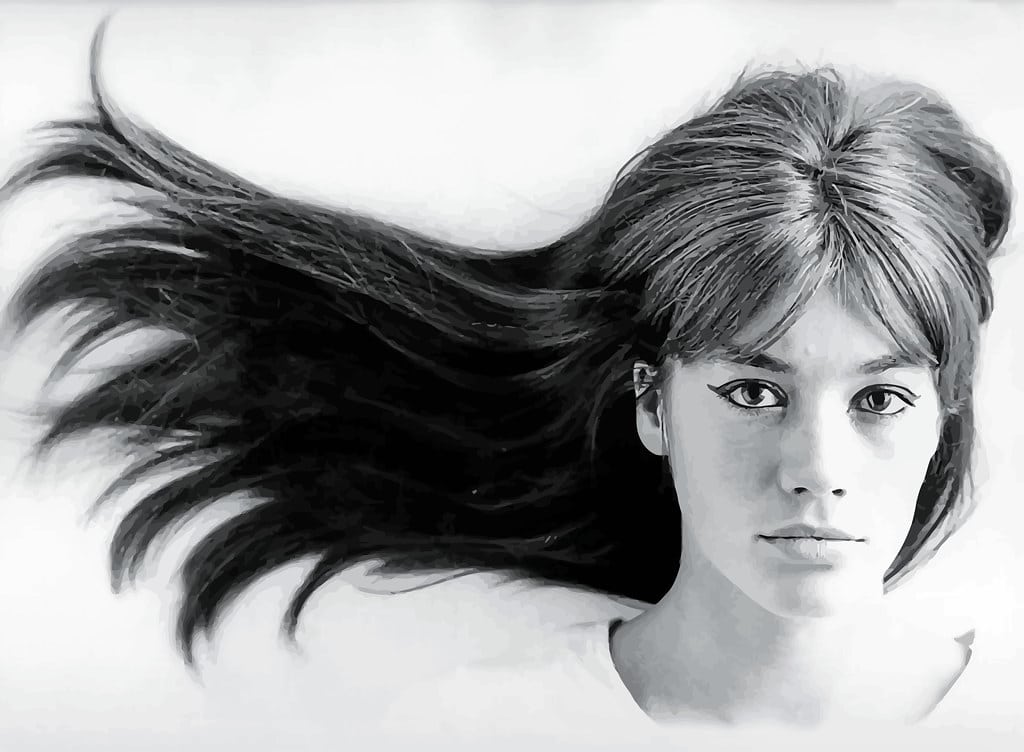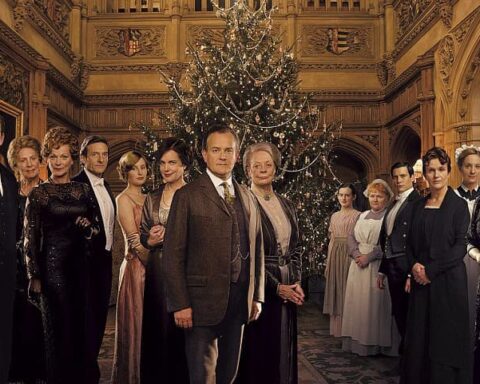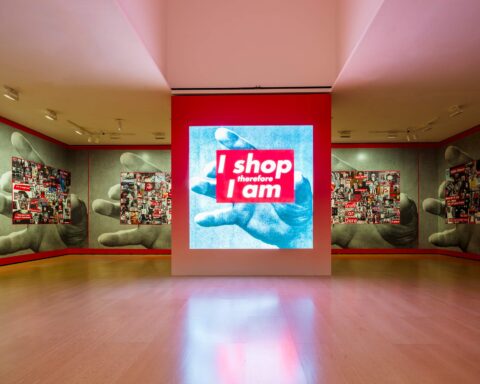Françoise Hardy died on June 11, 2024 at the age of 80, after a fierce battle with cancer. Following in the footsteps of Jane Birkin a few months earlier, the public has lost another French chanson star of international stature, as well as a style icon who had no equal when it came to combining androgynous good looks with feminine sensuality. Her sophisticated yet effortless allure made her the epitome of the Parisian dream girl.
With bangs in the wind, a leggy silhouette, a guitar under her arm and an audience particularly enthralled by her heartfelt pop ballads inspired by her own experiences. We’re not talking about Taylor Swift here, but about Françoise Hardy, who at the age of 80 has joined the stars, the epilogue to a 30-year battle with pharyngeal cancer, which will be made public in 2019.
A rare singer-songwriter of the yé-yé period, François Hardy was a synthesis of female emancipation at the dawn of the great upheavals of 1968. A wonderful singer of soulful songs, she remains France’s sole representative in Rolling Stones magazine’s 2023 list of the 200 greatest singers of all time.
Raised with her sister by a single mother from a working-class background, the solitary, shy young girl did herself some violence, asking for her first guitar at 16 and making her first appearance at Mireille’s Petit conservatoire de la chanson.
She was only 18 when her first song was released… and what a song it was! “Tous les garçons et les filles” (1962) sold 2 million copies! Photos taken with her photographer boyfriend Jean-Marie Périer soon made her a household name across the Channel. So much so that Mick Jagger and David Bowie flocked to meet her.
But if the leader of the Rolling Stones saw in her his “feminine ideal”, Bob Dylan his platonic love through poetry, and photographer pygmalion Jean-Marie Périer his muse, it was as much for her talent and personality as for her resolutely avant-garde style for the time.
A pioneering androgynous look
While flare jeans, high boots and mini-skirts were no match for her, Françoise Hardy’s androgynous physique and discretion were her most distinctive traits. This was in stark contrast to the pulpy, exuberant Marilyn Monroe pin-ups Brigitte Bardot claimed to be.
When she appeared on the scene with her first hit, she wore a shapeless black sweater and… the bangs that were to become her signature before she opted for a boyish bob.
Her lanky silhouette foreshadowed the models who walked the catwalk. Photographer Jean-Marie Périer, who worked for Salut les Copains magazine and with whom she had a stormy love affair, was “fascinated by such a photogenic face, all the more so as she was totally unaware of her seductive power”.
For before becoming a feminine ideal that Maxcence would not have denied in her eponymous song from Jacques Demi’s film Les Demoiselles de Rochefort, the young woman, weighing in at 52 kilos for 1 meter 72, had a body complex.
“When I was young, I didn’t think I was beautiful. My grandmother told me throughout my childhood and adolescence that I was awful, that no one would ever like me.”
“Sixties “Space Girl
A fashion icon in spite of herself, Françoise Hardy was an ambassador of choice for major fashion houses such as Yves Saint Laurent, for whom she was not afraid to wear a lady’s tuxedo. But her defining encounter was with fashion engineer André Courrèges, whose trapeze dresses she dared to wear straight out of Space Age. In her memoir “Le Désespoir des singes et autres bagatelles”, she wrote: “Looking back, if I had to have a link with a great couturier, it could only be him, because he’s different from the others. He’s a poet, a dreamer, a purist”.
But it is with the gleaming armor of fashion metallurgist Paco Rabanne that she will imprint retinas for centuries to come. In 1968, Rabanne left posterity with the image of the idol of the young in a 38-kilogram metallic gold mini-dress, revealing a restrained Barbarella. The designer was also responsible for her stage outfit, a chainmail suit whose weight turned the show into an ordeal for the singer of “Mon Amie La Rose”.
Minimal and multigenerational
Offstage, Françoise Hardy accentuated the purity of her style, sporting denim pants and a naturally white boyish cut as her new uniform.
She leaves behind the image of a multigenerational fashion icon, as evidenced by Marie Claire magazine, which recalled in 2018, “the combo of flare jeans, short fur coat and clogs favored by Françoise Hardy in the 1960s is a look much sought-after by fashionistas today”.
With her distinguished melancholy, Françoise Hardy remained the Parisienne of dreams, but above all the embodiment of disarming naturalness.
Read also > Jane Birkin, France’s favourite baby doll, is gone
Featured Photo: © Press














